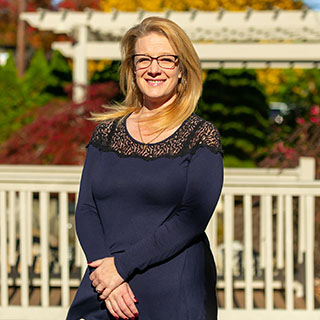Electroconvulsive Therapy
Electroconvulsive therapy (ECT) uses brain stimulation to help people overcome treatment-resistant severe depression.

Virtua offers electroconvulsive therapy (ECT) for people living with treatment-resistant depression or bipolar disorder. ECT is the most effective treatment for severe depression and can help improve your quality of life.
How does ECT work?
ECT is a brain stimulation therapy that uses electrical pulses to cause a brief seizure in your brain. This stimulation leads to changes in the brain that can improve your mood and relieve symptoms of depression and bipolar disorder.
Studies to understand exactly how ECT works to improve depression symptoms are ongoing. However, scientific evidence strongly suggests:
- It stimulates the activity in your brain’s circuits.
- It increases the neurotransmitters dopamine or serotonin, which are associated with feelings of happiness, focus, and motivation.
The American Psychiatric Association, the American Medical Association, and the National Institute of Mental Health recognize the use of ECT. Years of scientific data show that no other treatment for depression is as effective as ECT. The treatment produces substantial improvement in about 80 percent of patients.
Even though ECT is highly effective in relieving depression symptoms, it’s not a cure. To prevent the return of symptoms, most people continue psychotherapy and/or medication, or in some circumstances, ongoing maintenance ECT treatments.
Who is a good candidate for ECT?
ECT can be effective for people who haven’t responded to medications or other treatment methods for severe depression. It may also be used to treat:
- Bipolar disorder
- Schizoaffective disorder and schizophrenia
- Catatonia, a condition in which you can become increasingly agitated and unresponsive
While ECT is NOT a treatment for anxiety, your anxiety symptoms may decrease with treatment as your depression symptoms improve.
ECT is NOT recommended if you have the following:
- Severe coronary artery disease or a recent heart attack
- Unstable vascular issues in the brain or a recent stroke
- Lung disease that compromises your breathing
- Increased pressure in your brain
- Any health issue that would make anesthesia riskier
What are the side effects of ECT?
The common side effects of ECT include:
- Headache
- Nausea
- Muscle aches
- Confusion or disorientation
- Temporary short-term memory loss and difficulty learning new things
You may feel these side effects for a few minutes or hours on the day of treatment. Headache or muscle pain can be treated with over-the-counter medications, such as ibuprofen (Advil) or acetaminophen (Tylenol).
The short-term memory loss that occurs with ECT improves one to two months after treatment ends in 99.5% of patients.
Why does ECT have a stigma?
ECT is a safe, effective, and painless treatment option for depression. But misinformation and negative portrayals of ECT in movies and the media have stigmatized this treatment.
The truth is that ECT and its delivery have been refined over many decades to reduce the side effects and improve outcomes for the people treated with it. ECT is proven to relieve symptoms of severe depression and provide life-changing and even life-saving results.
What is it like to have ECT at Virtua?
Most people are referred for ECT by their psychiatrist or therapist. However, a referral from any licensed medical professional is acceptable. We also take calls directly from patients who want to learn more about ECT or are interested the receiving treatment.
Before starting ECT
Before starting ECT, you’ll need a physical exam, lab work, and medical history review. You also may need medical clearance from a cardiologist, neurologist, orthopedic specialist, or dentist (to check for loose teeth) to ensure you can proceed with ECT safely.
Finally, we review the information above with you. Once you’re medically cleared to receive ECT, we schedule your treatments.
What happens at each ECT treatment?
ECT is an outpatient procedure, which means you go home the same day. Here’s what you can expect on the day of treatment:
- You go to a “pre-op” area. There you meet your ECT team, which includes a psychiatrist, an anesthesiologist, and a nurse. The team reviews your current health, mood, and changes in your medical history, and confirms that you haven’t eaten anything.
- At the time of treatment, you get an IV, which is used to administer a muscle relaxant that minimizes the bodily effects of the seizure. You also receive general anesthesia, so you’re asleep for the procedure.
- The psychiatrist applies electrodes to your temples or scalp. The electrodes deliver a precisely controlled electric current that causes a brief, 30-second seizure in your brain.
- Your jaw clenches during treatment, so the nurse places a ‘bite block’ in your mouth to protect your teeth and tongue. Otherwise, you may only experience slight movement in your hands and feet.
- During the procedure, the team carefully monitors your brain activity, breathing, blood pressure, and pulse.
- After treatment is complete, you wake up within minutes. You won’t feel the treatment and probably won’t remember what happened during the procedure.
- Once your anesthesia has worn off and you’re alert and can walk on your own, you can go home.
Your total time at the hospital is about 2 to 3 hours from pre-op to post-op.
Since ECT is performed under general anesthesia, someone must drive you home after treatment. Once you’re home, it’s also recommended that someone stay with you to monitor you for side effects.
How often do I need ECT?
ECT treatments are typically scheduled two or three times a week, for six to 16 treatments, depending on the severity of symptoms and how you respond to the treatment.
Most people start to feel improvement in their mood after three to five treatments.
Virtua ECT Location
Virtua offers ECT at Virtua Mount Holly Hospital three days a week on Mondays, Wednesdays, and Fridays.
The Virtua Difference for ECT
Brain stimulation expertise
Expert psychiatrists have provided electroconvulsive therapy (ECT) at Virtua Mount Holly Hospital for more than 20 years, offering an effective option for patients whose depression hasn't improved with medication or psychotherapy.
Brain stimulation expertise
Expert psychiatrists have provided electroconvulsive therapy (ECT) at Virtua Mount Holly Hospital for more than 20 years, offering an effective option for patients whose depression hasn't improved with medication or psychotherapy.
We’ll answer all of your questions
We recognize the stigma ECT has and that you might be concerned by how it has been portrayed. Contact us, and we’ll answer your questions, explain the procedure, and talk with you about how our patients’ lives have changed for the better because of ECT.
We’ll answer all of your questions
We recognize the stigma ECT has and that you might be concerned by how it has been portrayed. Contact us, and we’ll answer your questions, explain the procedure, and talk with you about how our patients’ lives have changed for the better because of ECT.
We'll help you through this
If you have recurring major depression, we understand how challenging it can be to find the motivation to seek treatment. We offer a safe space for judgment-free care, so you can focus on healing.
We'll help you through this
If you have recurring major depression, we understand how challenging it can be to find the motivation to seek treatment. We offer a safe space for judgment-free care, so you can focus on healing.
Call Us Today
Learn more about treatment-resistant depression and brain stimulation therapies at Virtua. Call 609-914-6550 or email InterventionalPsych@virtua.org.
ECT Quick links
How can we help you?
Talk to Your Psychiatrist About ECT
If you have treatment-resistant depression and want to see if you’re a candidate for ECT, ask your psychiatrist to call Virtua’s ECT program. Physicians can refer patients by calling 609-914-6550.



